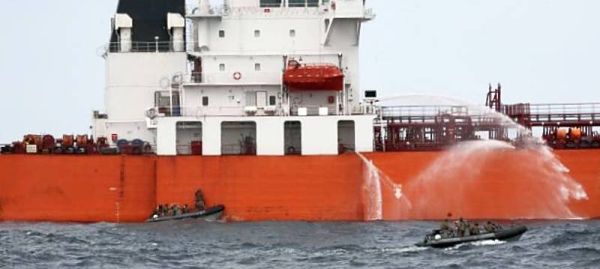WASHINGTON, Jan. 27, 2012 — The United States has no interest in establishing new military bases in Asia and the Pacific, but welcomes opportunities to rotate forces there and would consider doing so in the Philippines, if offered, the top U.S. military officer in the region said today.
“We would welcome discussions with the Philippines along those lines, but there’s no aspiration for bases in Southeast Asia,” Navy Adm. Robert F. Willard, the U.S. Pacific Command commander, said at the Foreign Press Club here.
Willard called the ongoing strategic-level dialogue between the Defense Department and the Philippine defense ministry part of “episodic” engagements focused on the two countries’ alliance and ongoing military cooperation.
“For a long time, we’ve been working closely with the armed forces of the Philippines to seek a broader balance in the capabilities within the Philippines,” he told reporters.
This, he said, recognizes that issues such as maritime security and stability are as important as the army-centric counterinsurgency and counterterrorism cooperation there. “We are interested in the Philippines in a maritime sense becoming increasingly self-sufficient, and we’ll help where we can,” he said.
Asked directly if the United States would ever reestablish a permanent base at Subic Bay, once a major U.S. naval base, Willard made clear it’s highly unlikely. The base, which closed in the early 1990s, was once the largest U.S. Navy installation in the Pacific.
“There is no desire nor view right now that the U.S. is seeking basing options anywhere in the Asia-Pacific theater,” he said.
Willard called Australia’s and Singapore’s offers for the United States to rotate forces there much more attractive. These arrangements enable Pacific Command to more conveniently and less expensively maintain a presence closer and more convenient to potential contingencies in the region, he said.
President Barack Obama and Australian Prime Minister Julia Gillard announced in November that beginning in the middle of this year, company-size rotations of 200 to 250 U.S. Marines will begin deploying near Darwin in Australia’s Northern Territory for six-month rotations. Gillard said the presence will expand to a force of 2,500 over the next several years.
In addition, Singapore has invited the United States to forward-deploy littoral combat ships there. Former Defense Secretary Robert M. Gates first announced that plan at last year’s annual Asia Security Conference in Singapore.
Meanwhile, the United States continues working to establish closer military-to-military ties with China, Willard said. He noted that the relationship is “sustaining itself” at the strategic level but said he hopes to be able to advance it to the operational and tactical levels.
“I would say there’s potential there,” he told reporters. “And I’m gratified that at the strategic level, that dialogue has persisted. I’m not satisfied that the military relationship is where it needs to be.”
Source:
U.S. Department of Defense
Office of the Assistant Secretary of Defense (Public Affairs)

 von
von 
